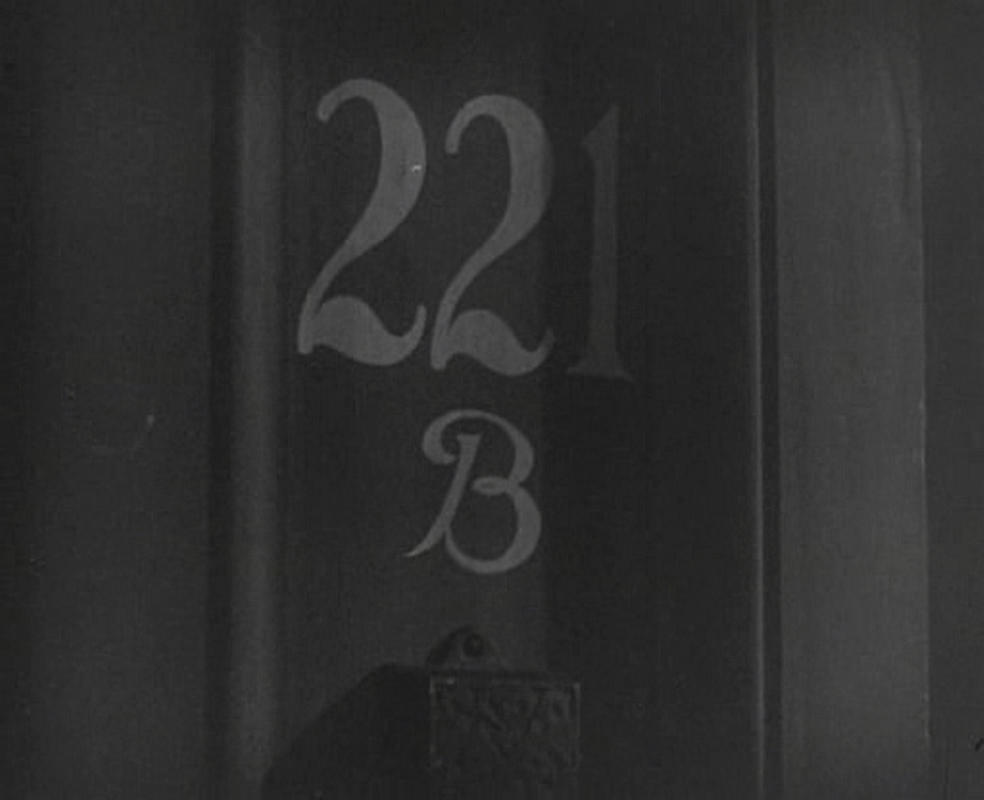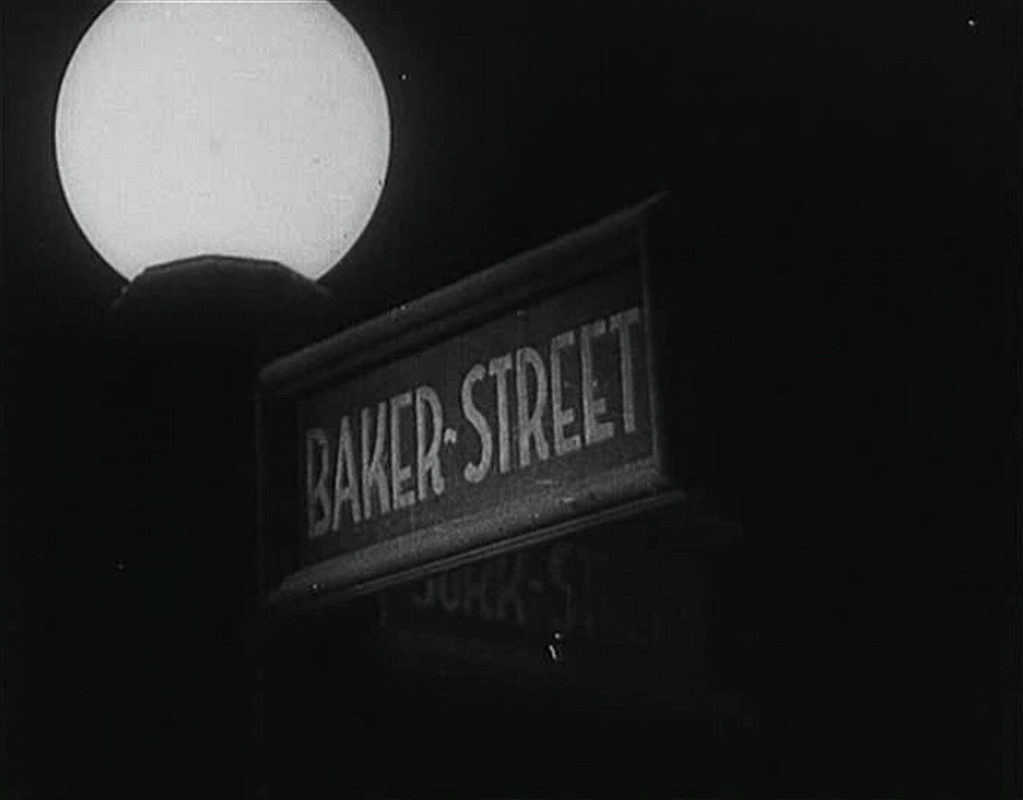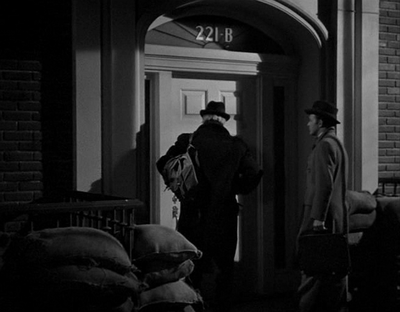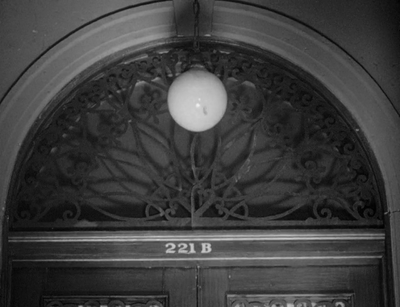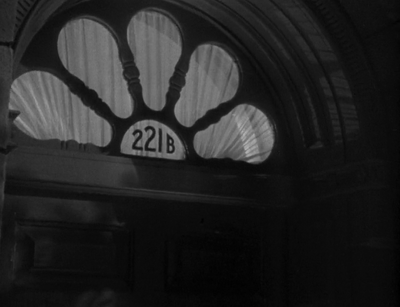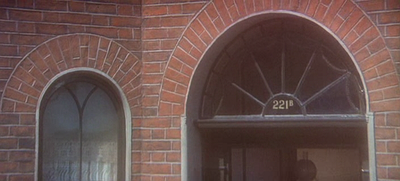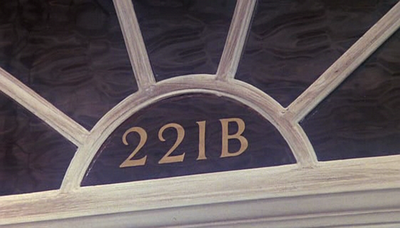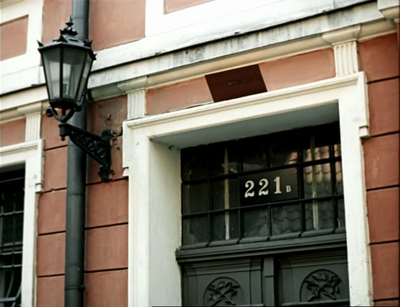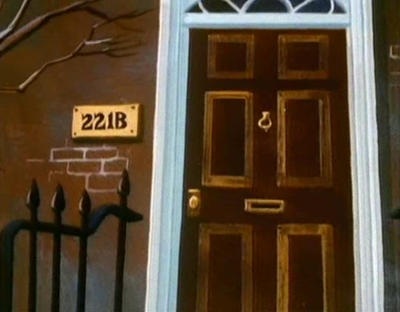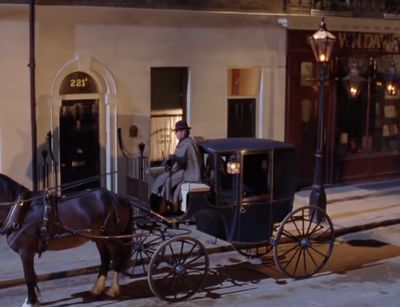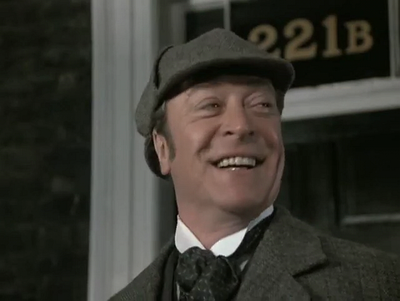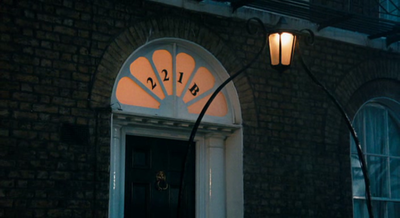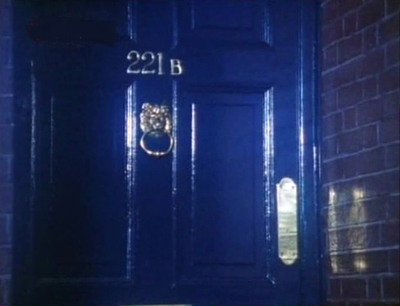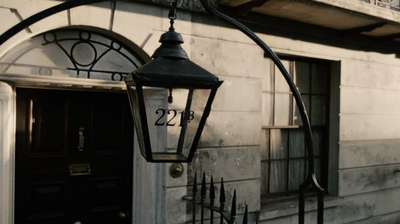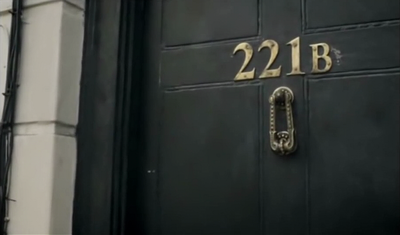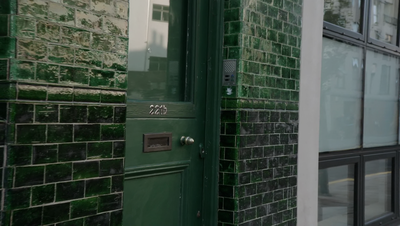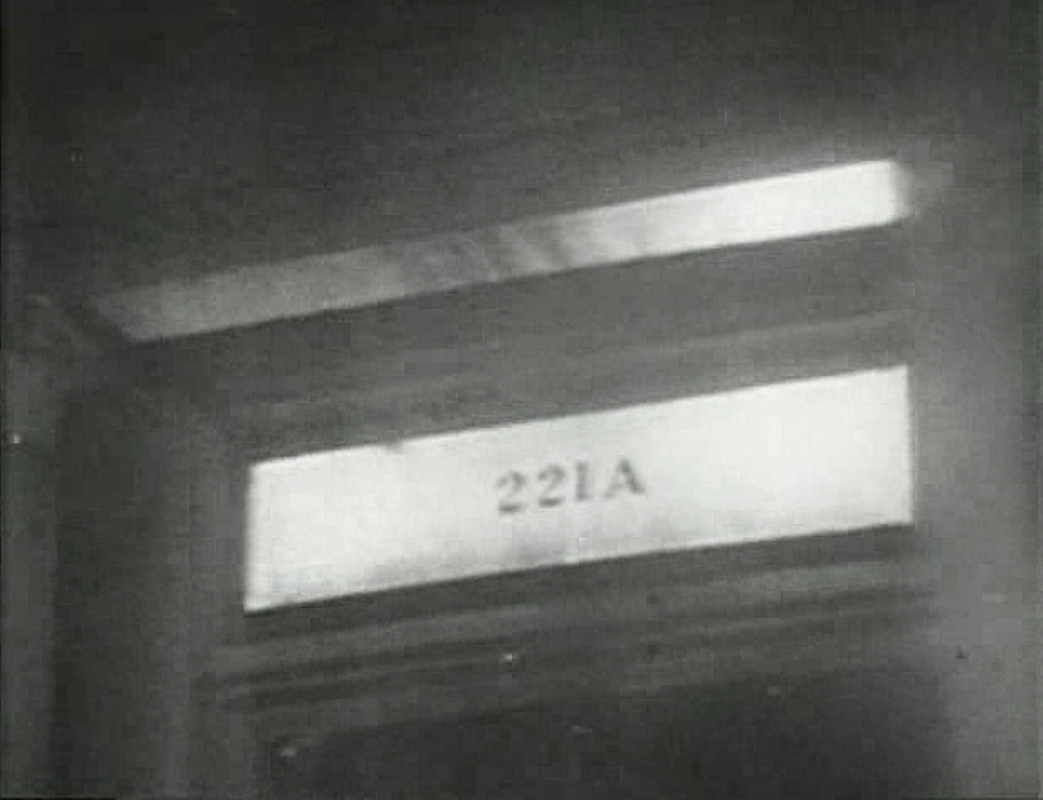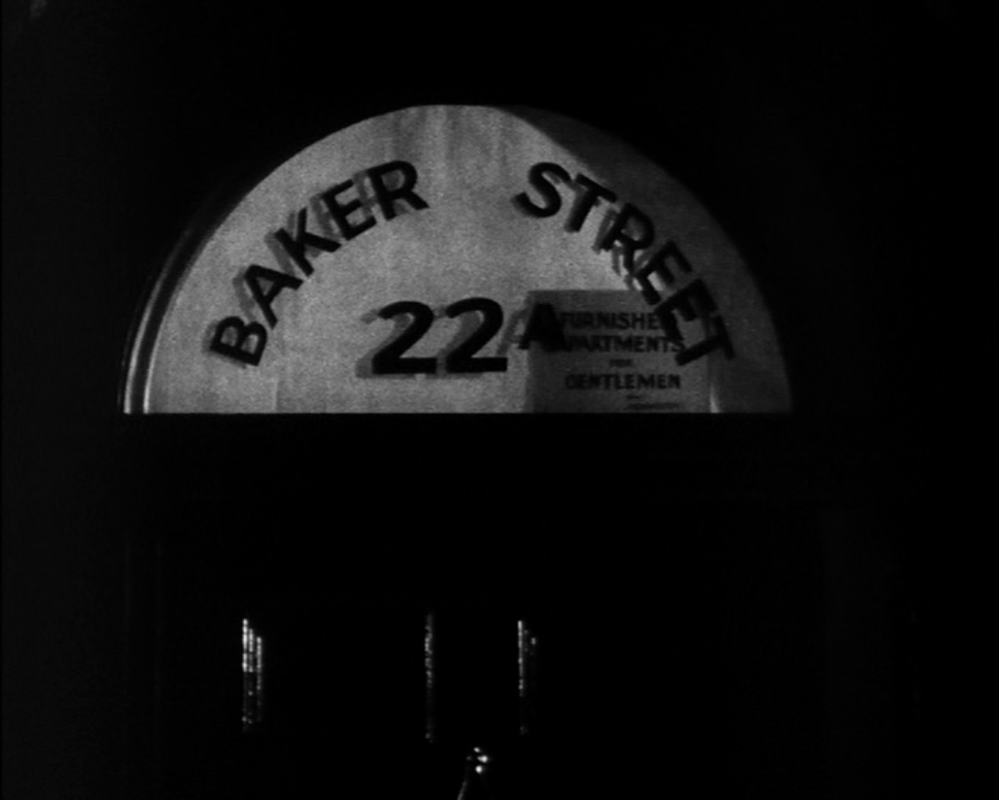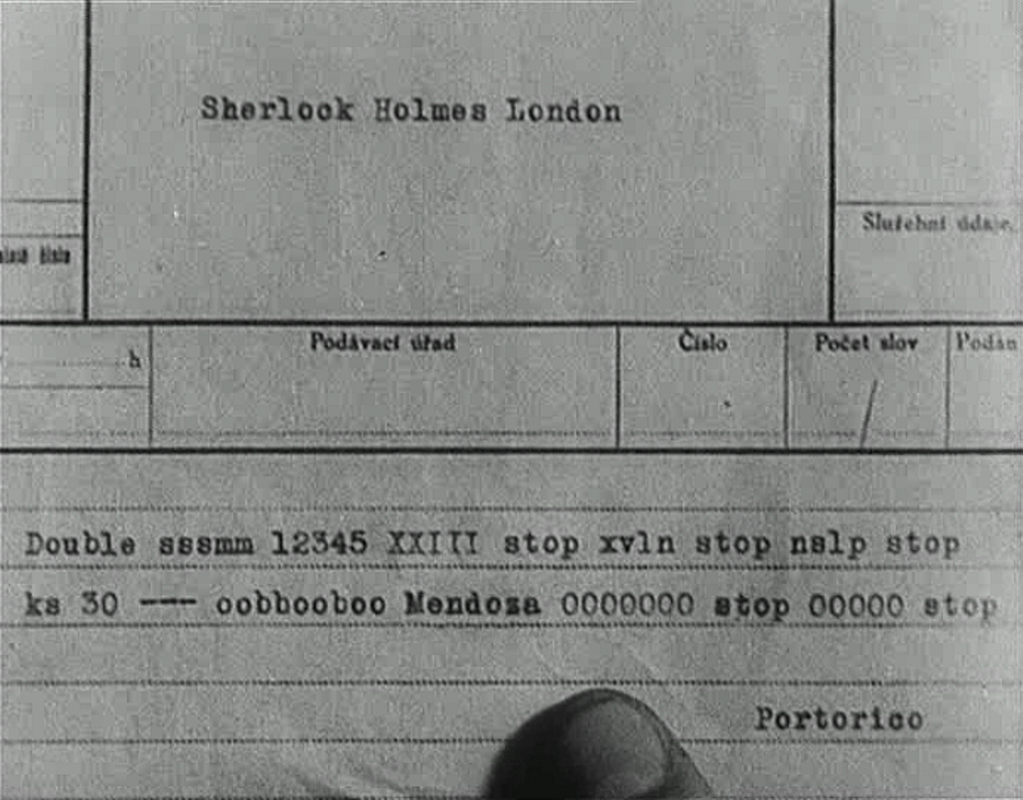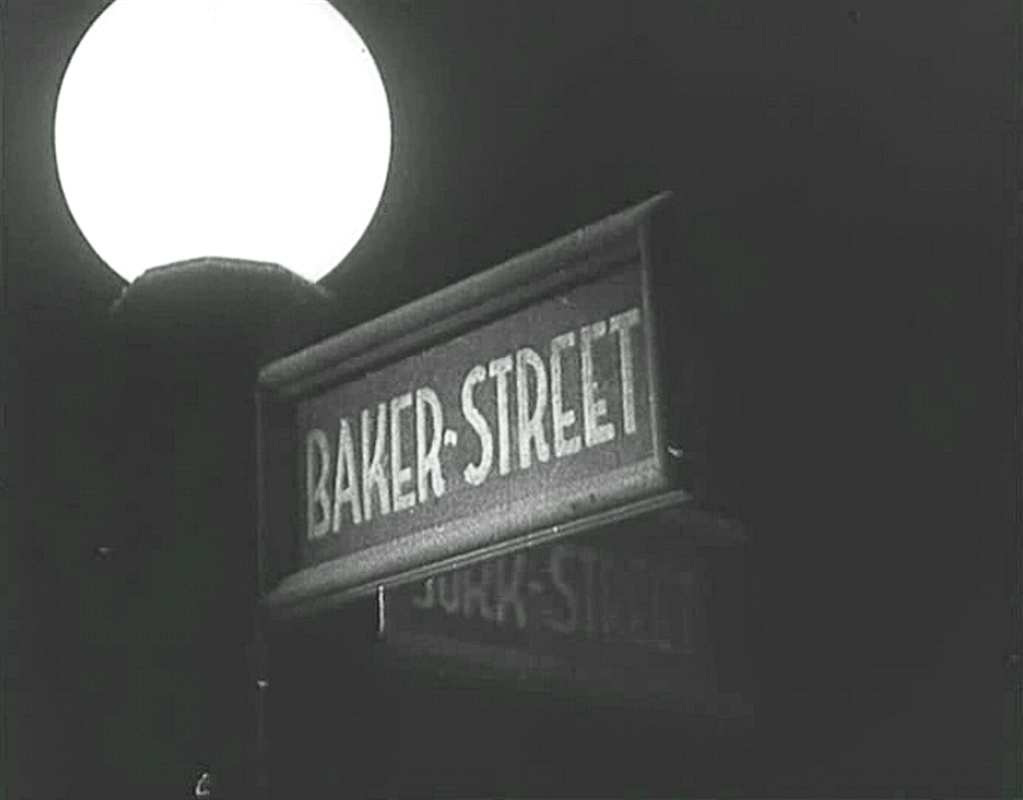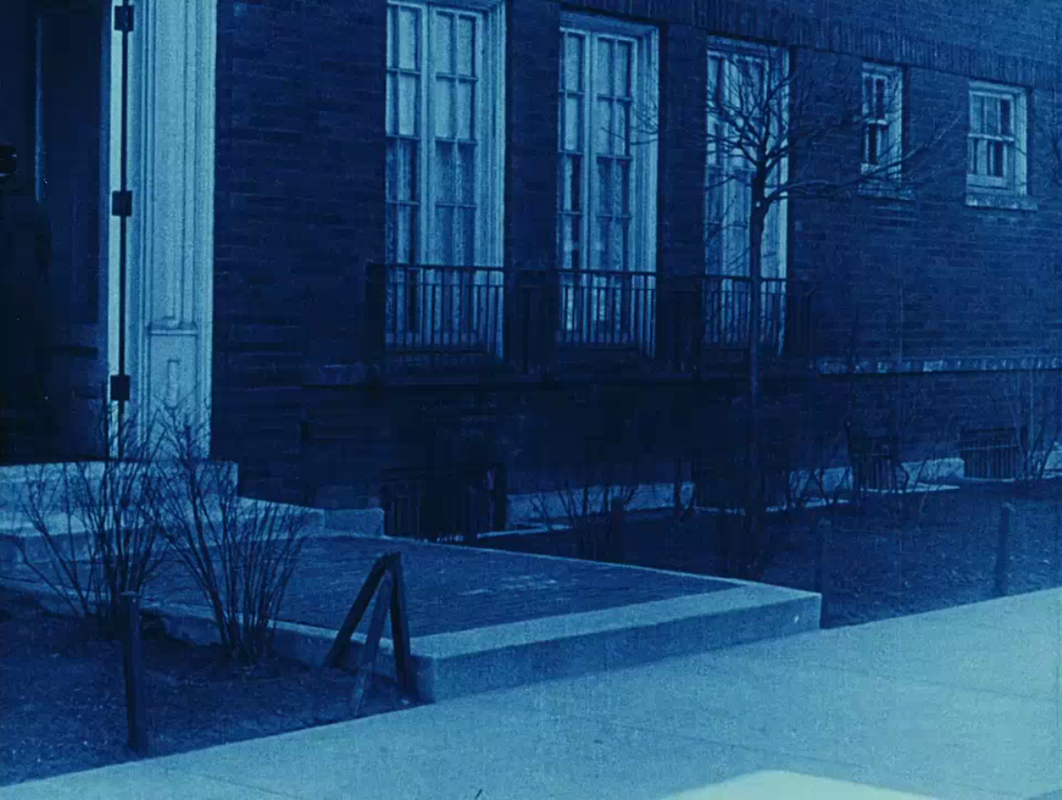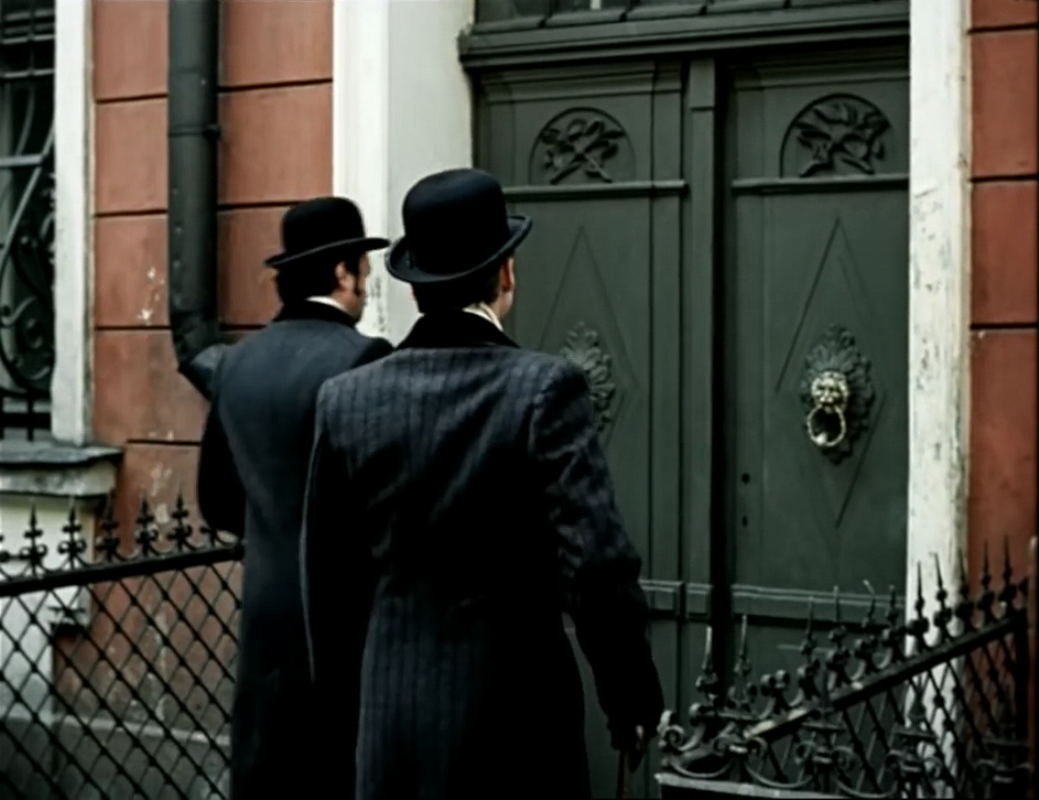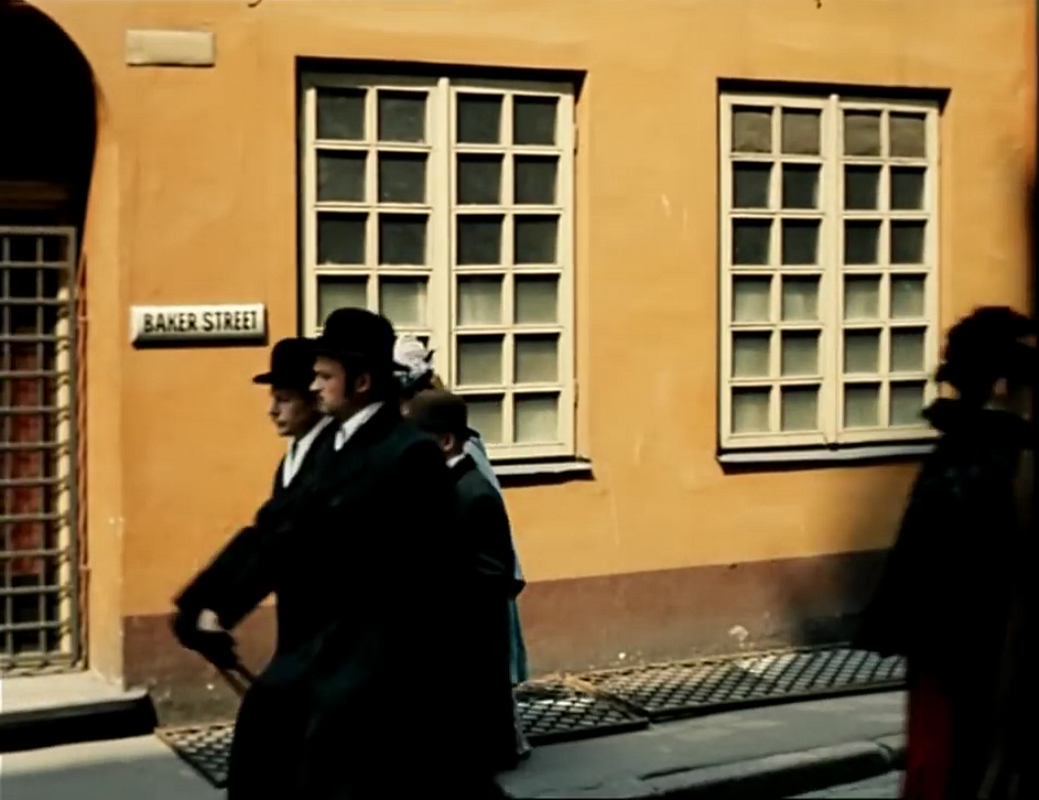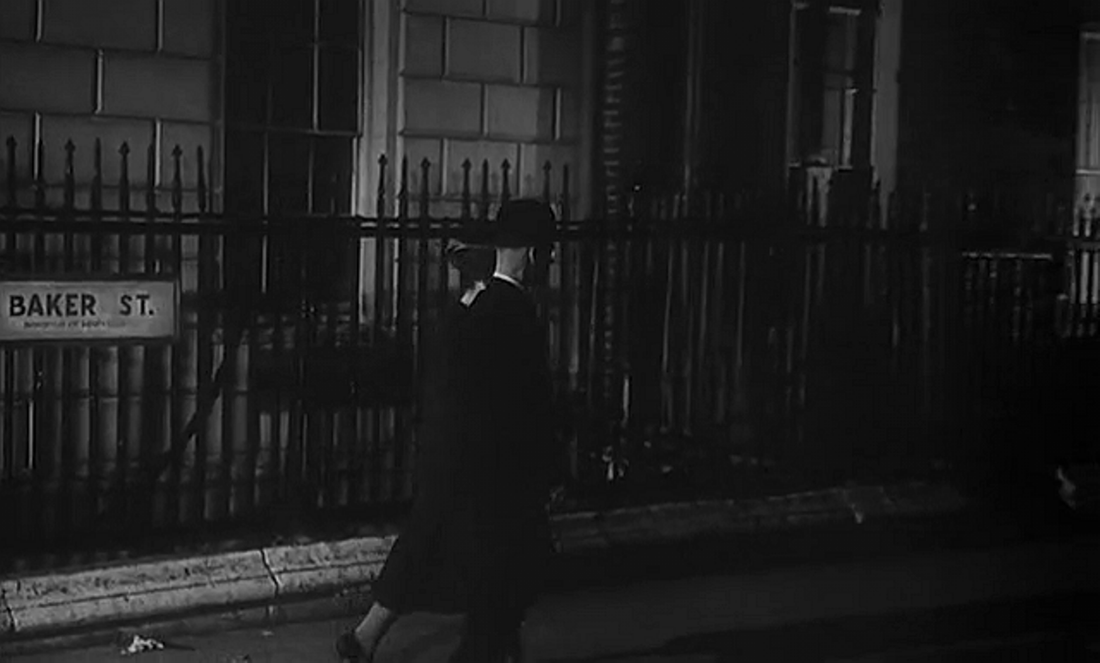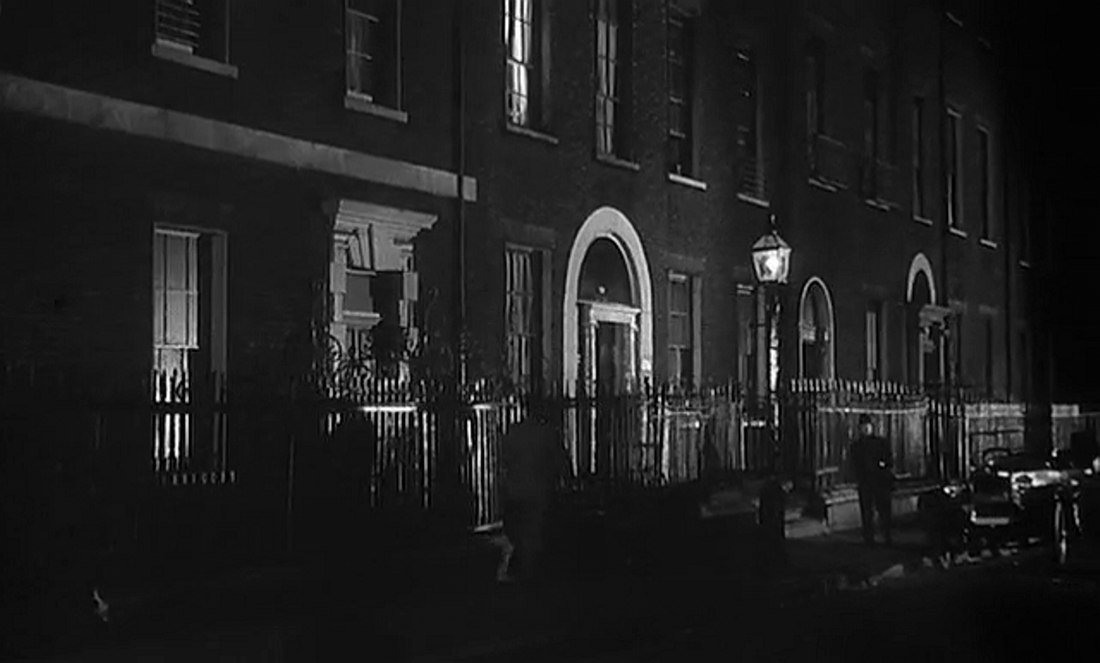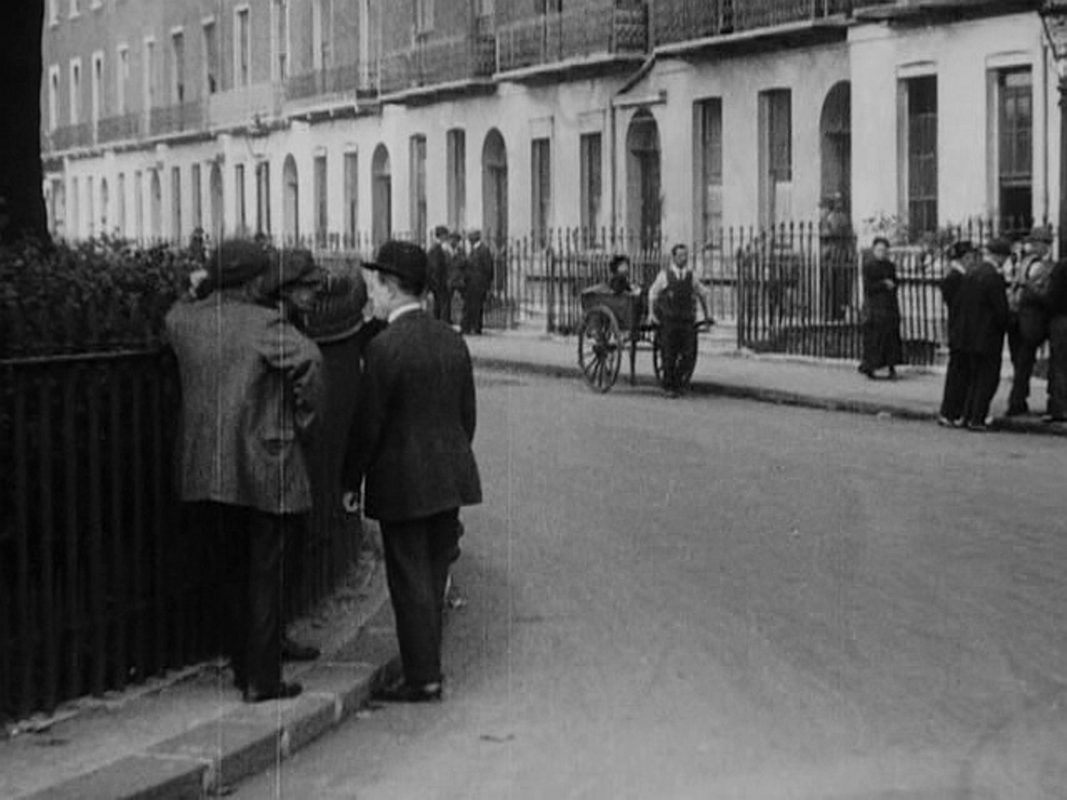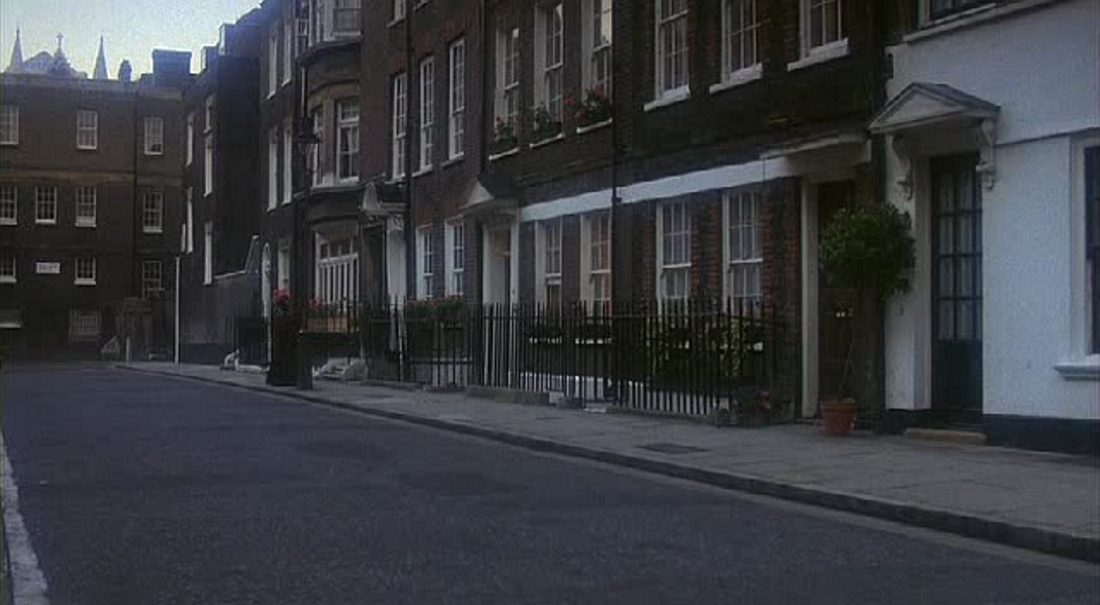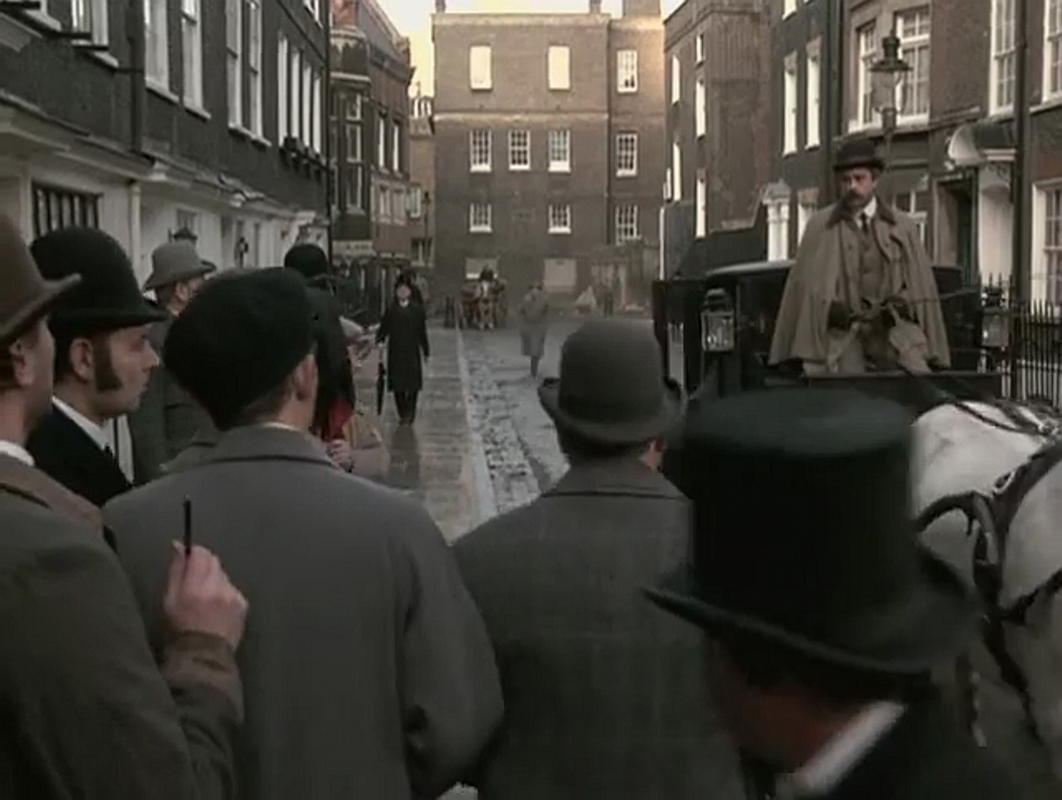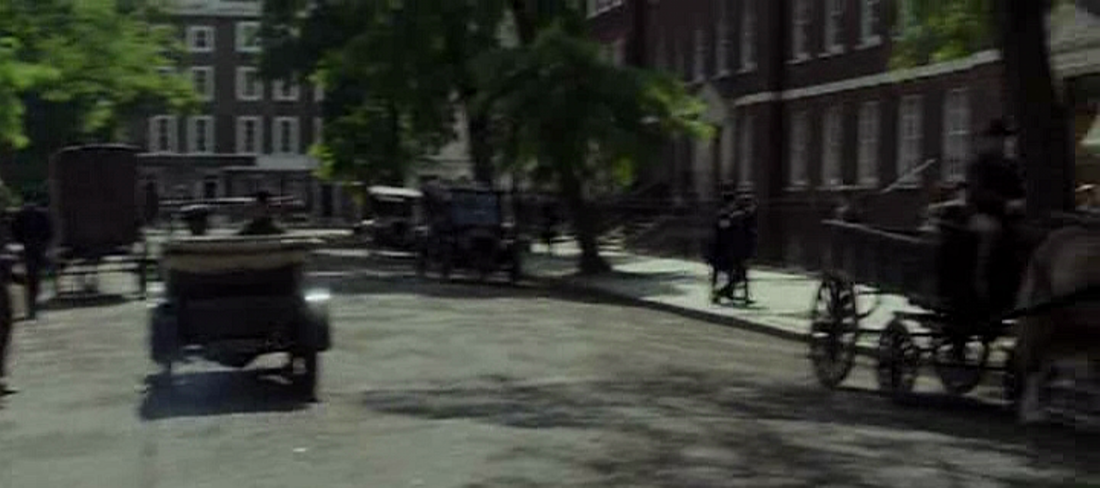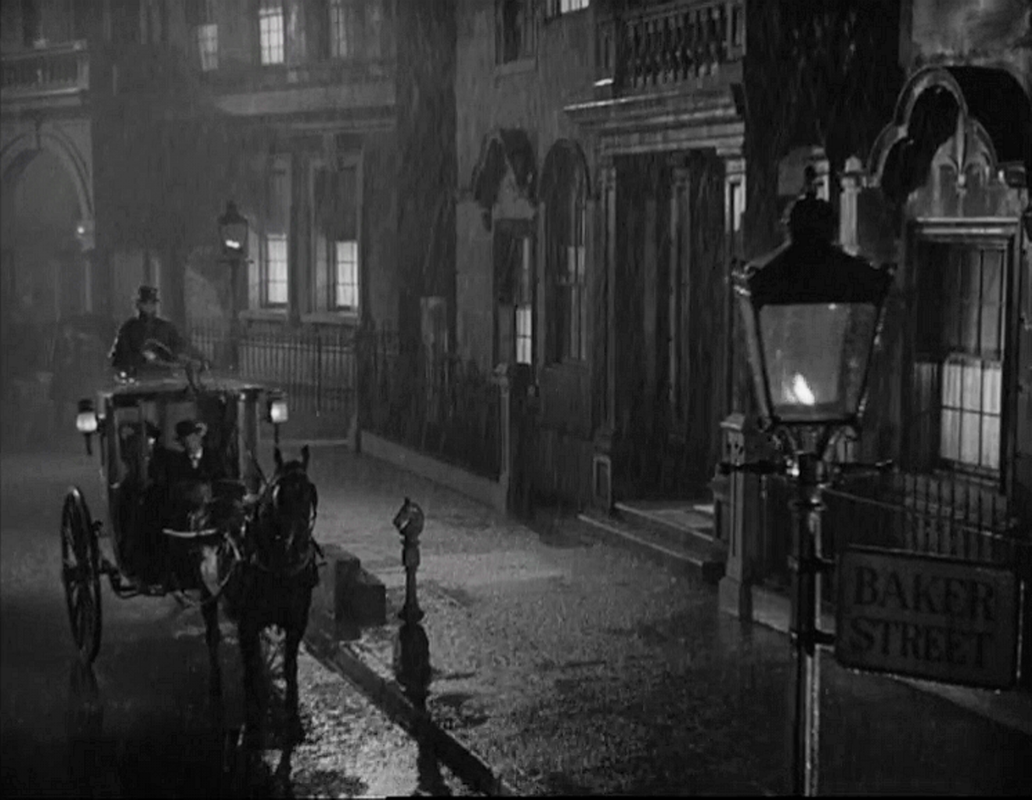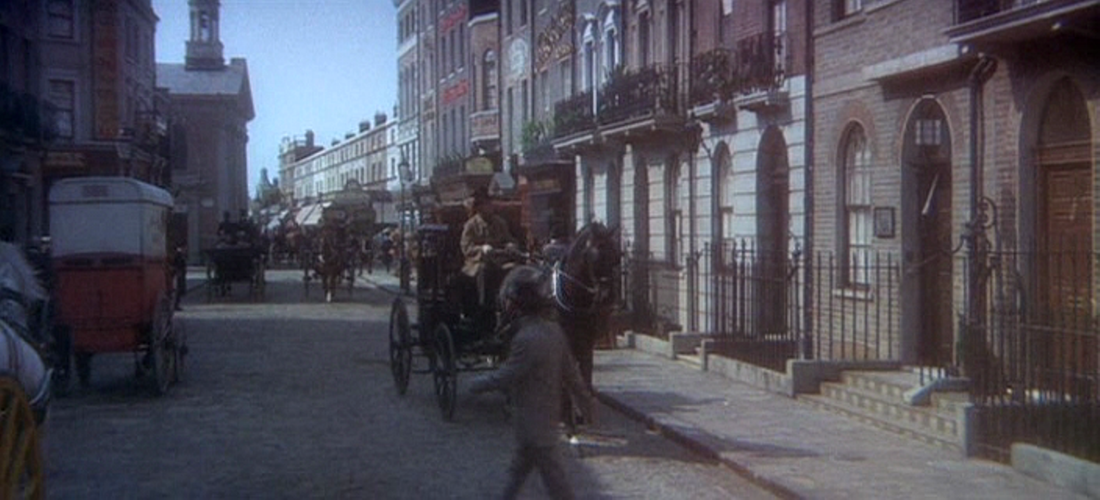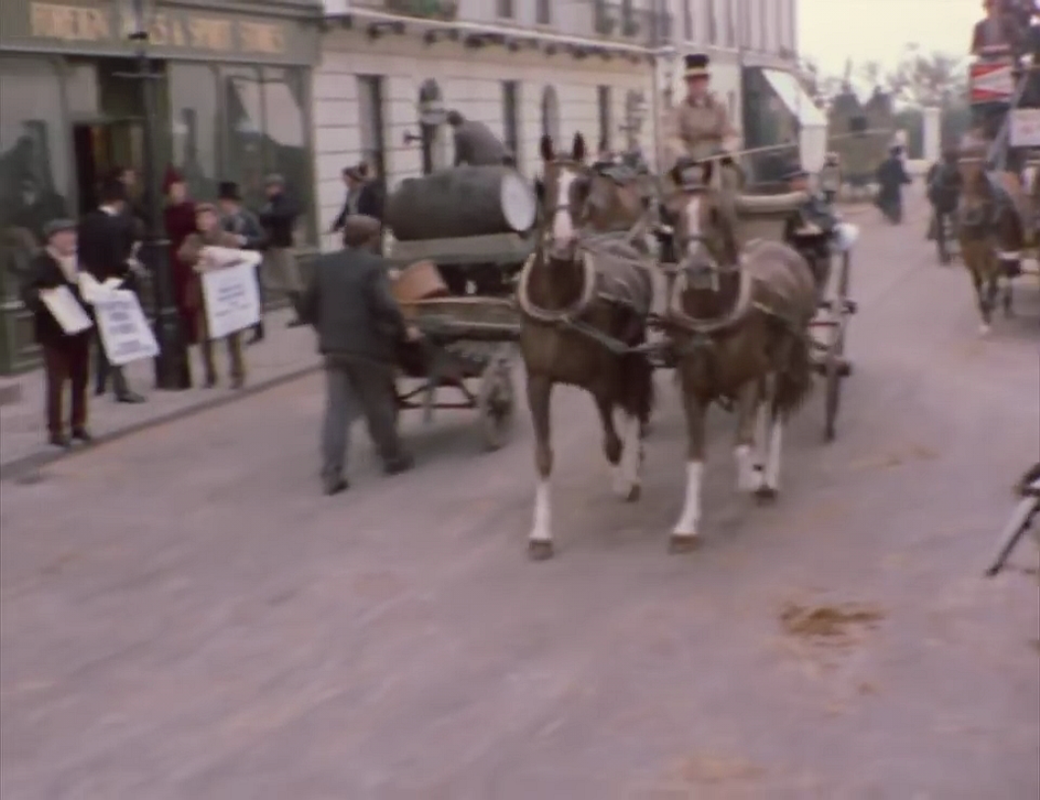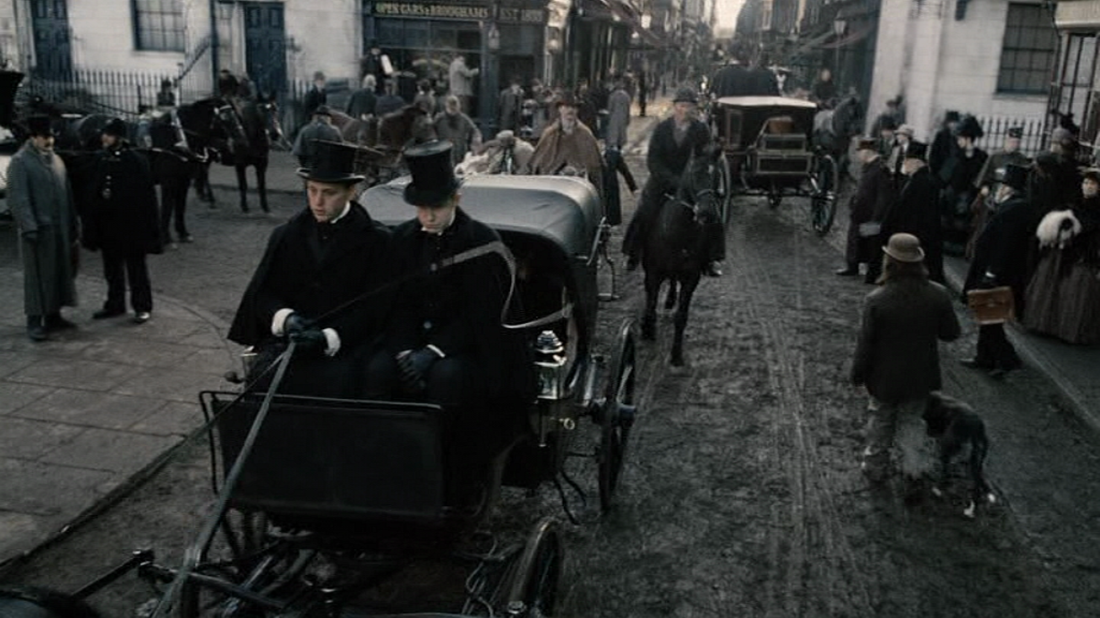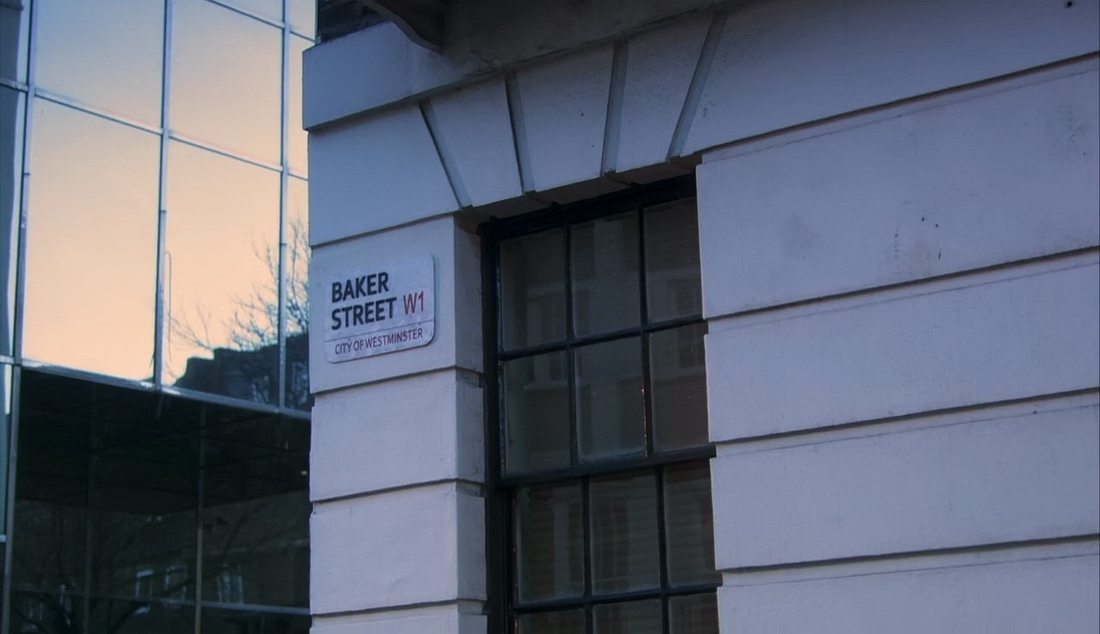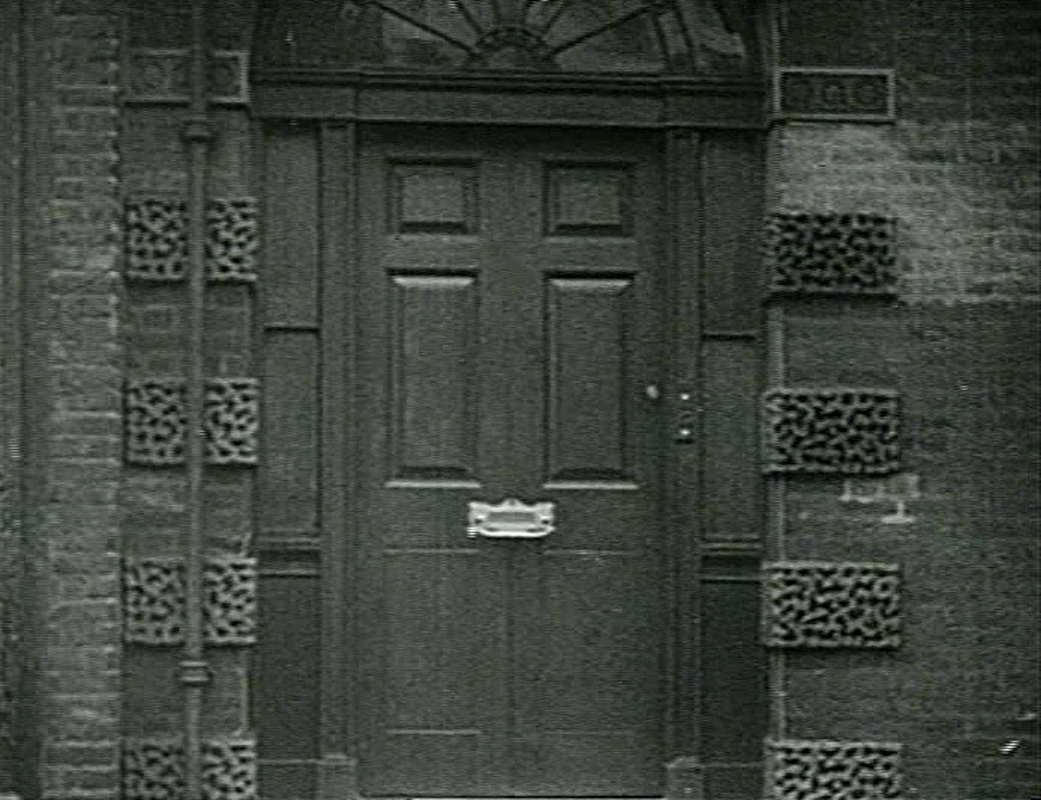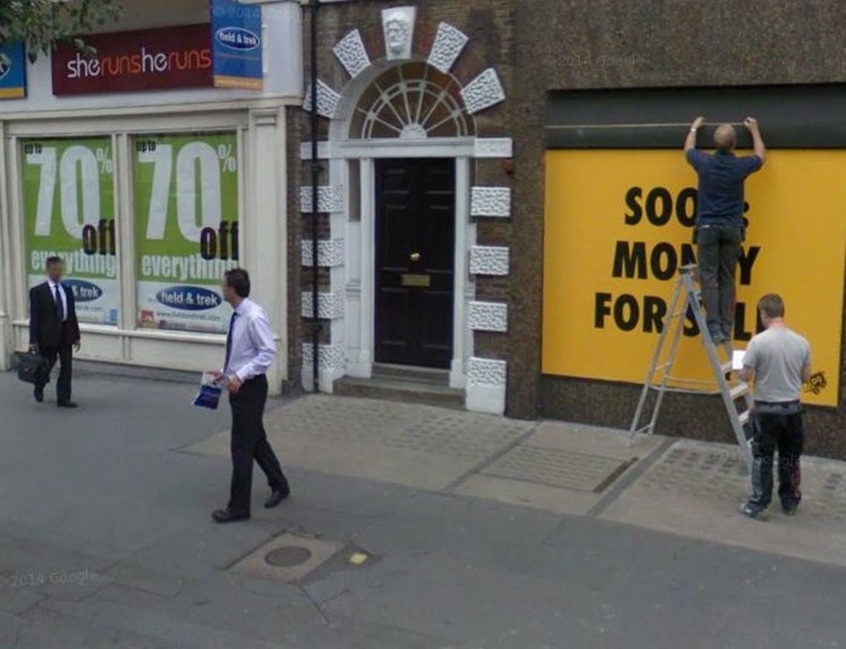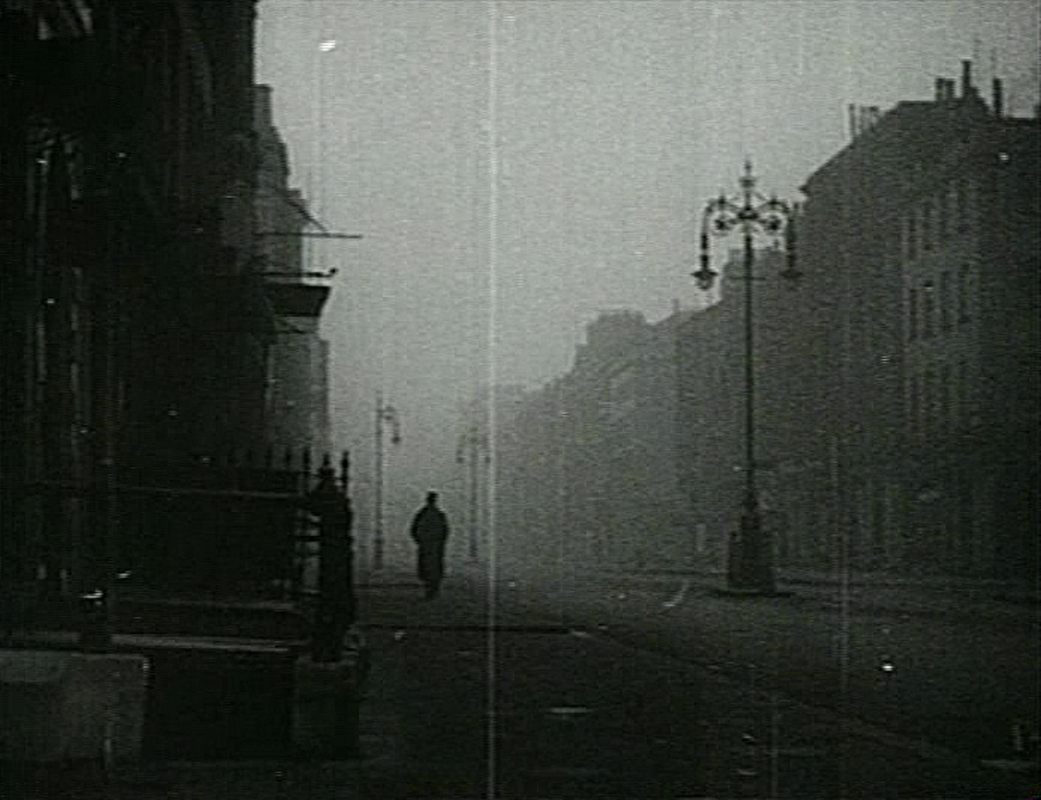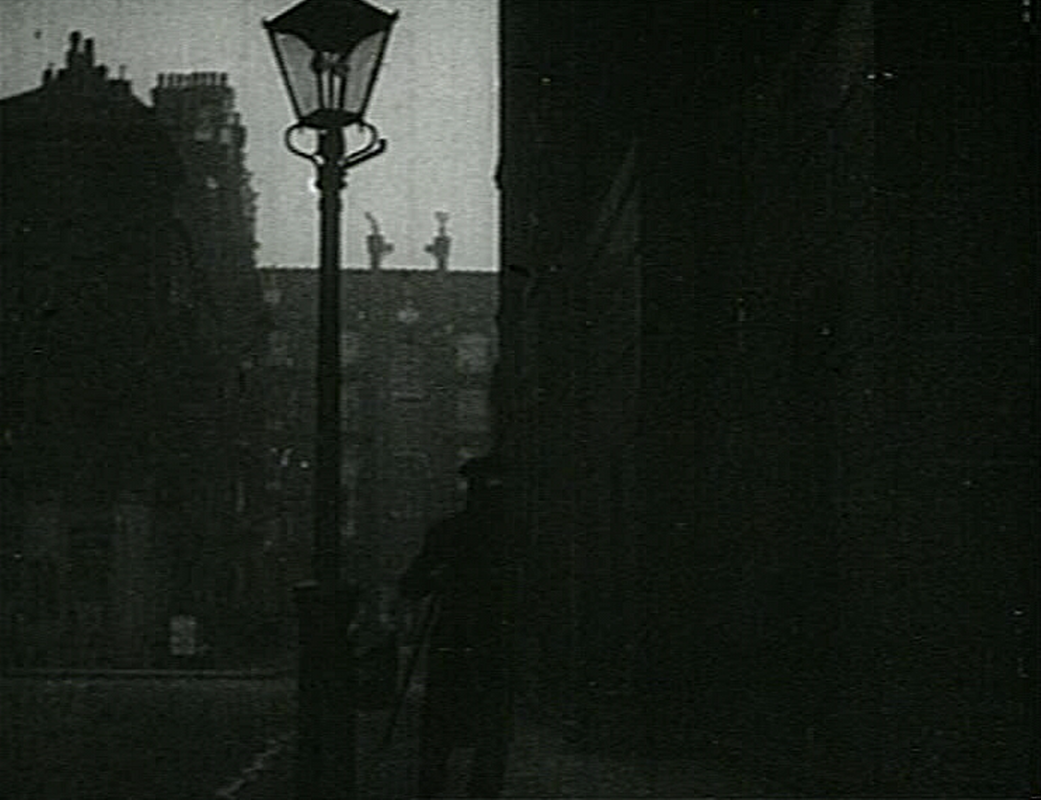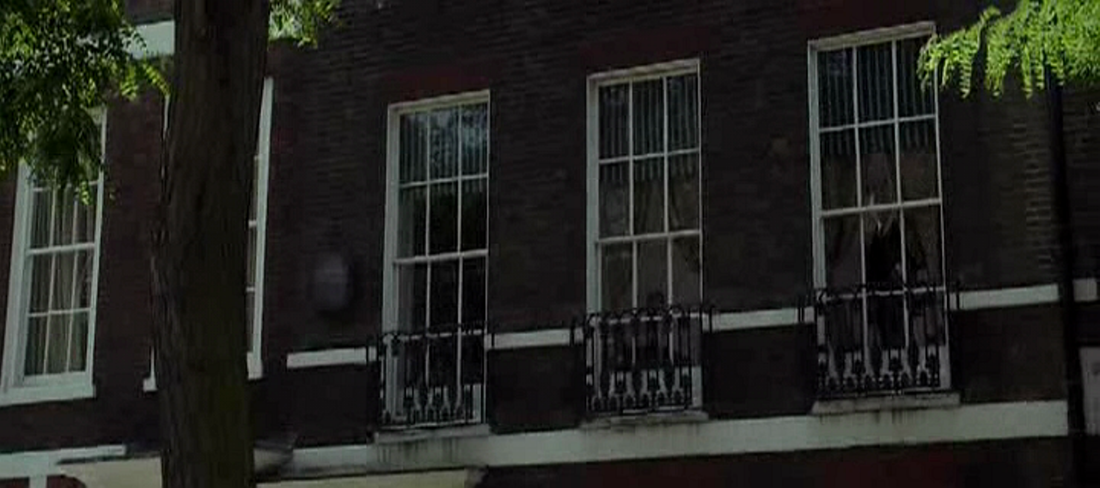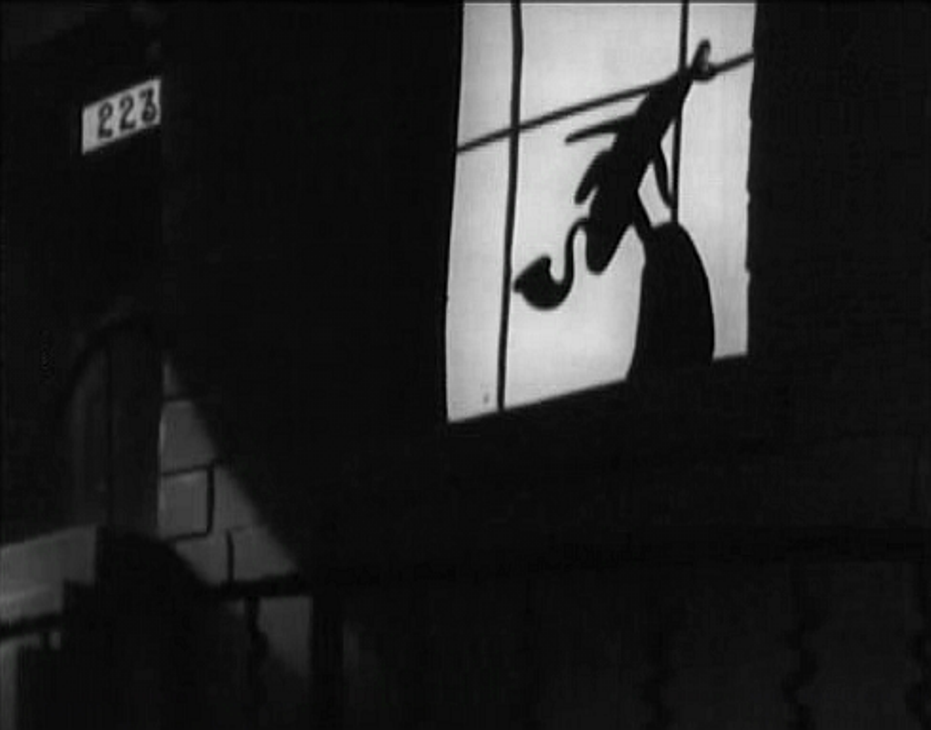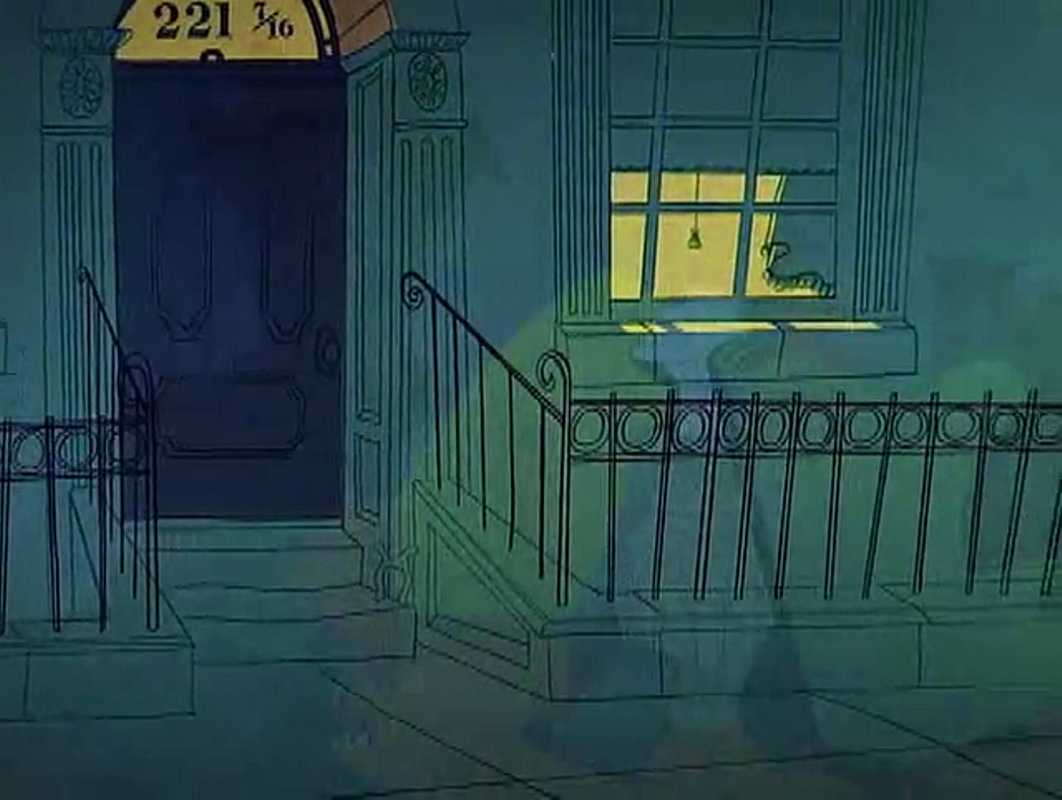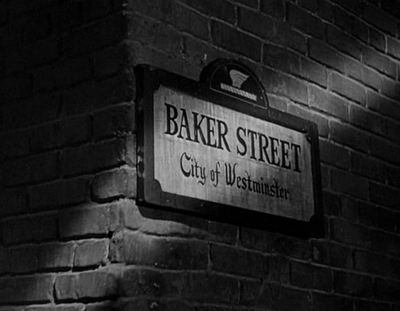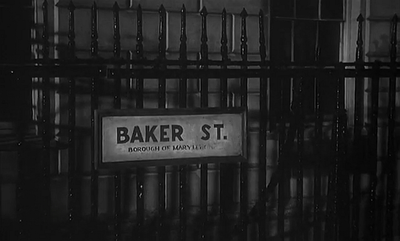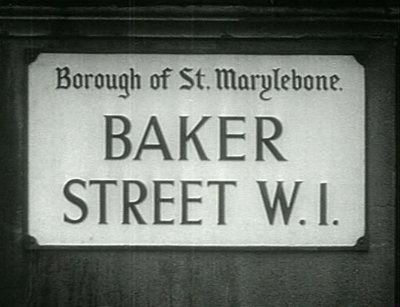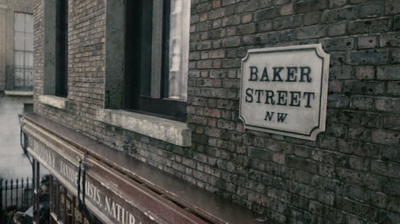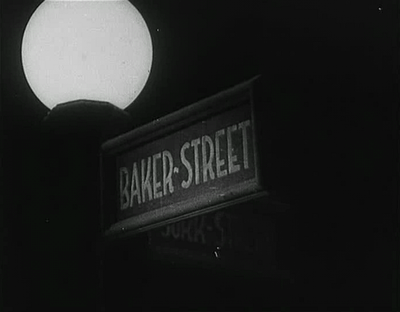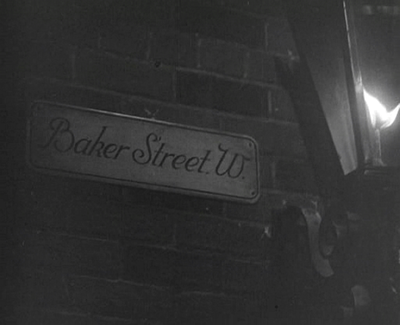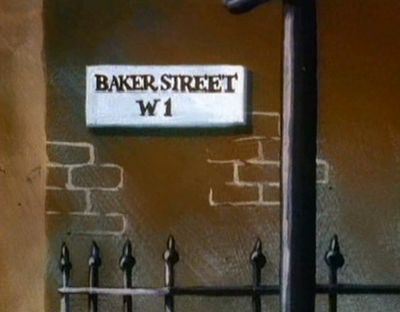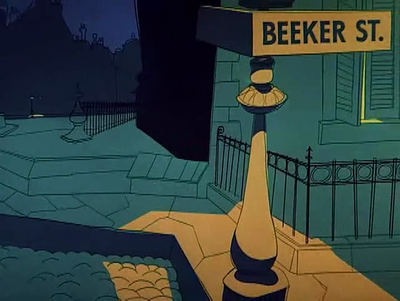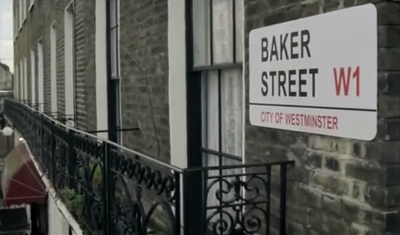some Baker Street irregularities
221B Baker Street, where lived Sherlock Holmes, is the most memorable address in all literature. The device of adding a letter to the number adds to its memorability, though opinion differs as to whether the B refers to a single apartment in a building or a single building in a block of several. The former is to me the more likely, but many films take the latter view, putting the number on the front door of the building, as above, left. Here are fifteen more instances:
All of these film or television adaptations remember the address correctly, which makes all the more remarkable the amnesia that struck the makers of three Holmes films in the early 1930s. On its own, the lapsus regarding Holmes's address in this 1933 U.S. production could be passed over:
But the year before an English adaptation also got the address wrong:
|
In what is otherwise a carefully constructed and visually impressive film (discussed here), this error is troubling. I am slightly less troubled by the wrong address given in a Czech comedy that same year, though the error is greater. Carl Lamac's Lelicek ve sluzbach Sherlocka Holmese - which also exists as Le Roi bis, a French version that I haven't seen - doesn't show the front door of the house, but shows in close-up a telegram received by Holmes.
|
At first the address is just 'Sherlock Holmes London', and the message itself is in code. Before our eyes the message is deciphered, and the recipient's full address also appears:
I would be interested to see if, in Le Roi bis, the French telegram we see also relocates Holmes to number 7 Baker Street.
The Czech filmmakers may not have consulted Conan Doyle's books before giving Holmes's street number as 7 rather than 221, but they do appear to have consulted a map of London. We are shown a sign bearing the street name, and though this is not an authentic London street sign, the topography is exact, since the street name on the adjoining sign is York Street, which does indeed adjoin Baker Street:
I have lightened the image so that the sign is more legible, in the process doing an injustice to the cinematographer, Otto Heller - who would in later life give allure to a more real London in films like The Ladykillers, Peeping Tom, Victim, The Ipcress File and Alfie.
It would have been impractical for the Prague-based makers of Lelicek ve sluzbach Sherlocka Holmese to film in the real streets of London, which is of course also true for most U.S.-based productions. William Gillette's 1916 film Sherlock Holmes, discussed here, uses Chicago to represent London, with a particularly unconvincing building for Holmes's residence:
Streets in cities other than London are rarely a match for the real Baker Street. This, I think, is Leningrad. It certainly isn't London:
On the other hand, Dublin in 1962 passes very well:
A 1922 U.S. production with John Barrymore (discussed in detail here) made a point of coming to London for authentic locations. In an interview Barrymore said that Baker Street itself had changed too much to pass as itself, so they used Torrington Square instead:
Other well-preserved parts of nineteenth-century London have also stood in for Baker Street. Here is Barton Street, S.W.1:
And here is Barton Street again, nine years later:
This, in the Sherlock tv series, is North Gower Street, N.W.1:
And this is Bedford Row, W.C.1:
More commonly, of course, something that corresponds to a general idea of Baker Street in the 1890s is constructed on a studio lot. Here are some confections of this type:
When Sherlock Holmes is relocated to the modern world, the street where he lives can be updated. In this 1943 film, Baker Street has been damaged by wartime bombing:
The contemporary setting of the 2010 BBC series Sherlock allows us to enjoy the collocation on North Gower Street of 1980s office building and Georgian terrace:
Despite John Barrymore's view in 1922 that 'the Baker Street of today no longer suggests the Baker Street of Sherlock Holmes's time', there are buildings on the street that could then and still might now successfully suggest the 1890s:
This is the entrance to 105 Baker Street, the home of Sherlock Holmes in the 1931 film The Speckled Band.
The shot of the doorway is preceded by two street views, the first of which I think is also Baker Street. The other is very dark but does look a bit like Porter Street seen from Baker Street:
If this turns out to be the only Sherlock Holmes adaptation to show the real Baker Street, questions will still be asked as to whether this is the part of Baker Street Conan Doyle had in mind when he invented the street number 221. A manuscript indicates that he had originally located Holmes in Upper Baker Street, north of Marylebone Road - near where there is now a Sherlock Holmes museum. Number 105 Baker Street is south of Marylebone Road, but not far south enough for those who have deduced that Holmes resided at what is now 31 Baker Street. See, for example:
The 2015 film Mr Holmes demonstrates, with a gag, awareness of such issues regarding Holmes's exact address. Some people are waiting outside 221B Baker Street, believing that he lives there:
They are observed by the detective himself from across the street, where he actually lives:
To end I return to the memorable address invented by Conan Doyle, signalling two films that misremember it for comic effect:
For several identifications I am indebted to Reel Streets and The Worldwide Guide to Movie Locations
